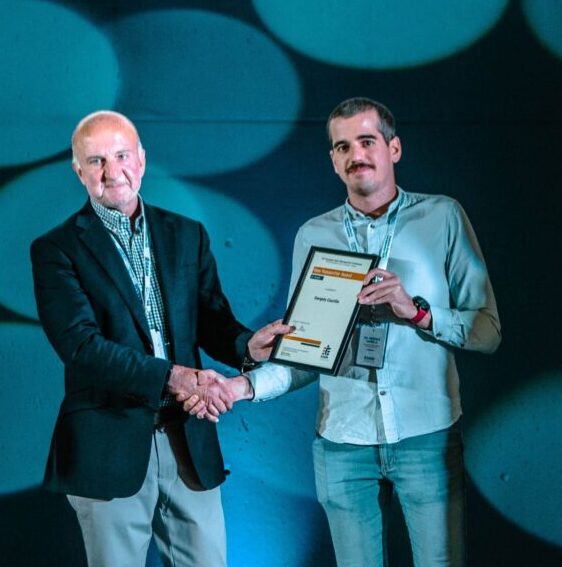Társadalmi különbségek a magyarországi gyerekek fogainak állapotában és egészségmagatartásában
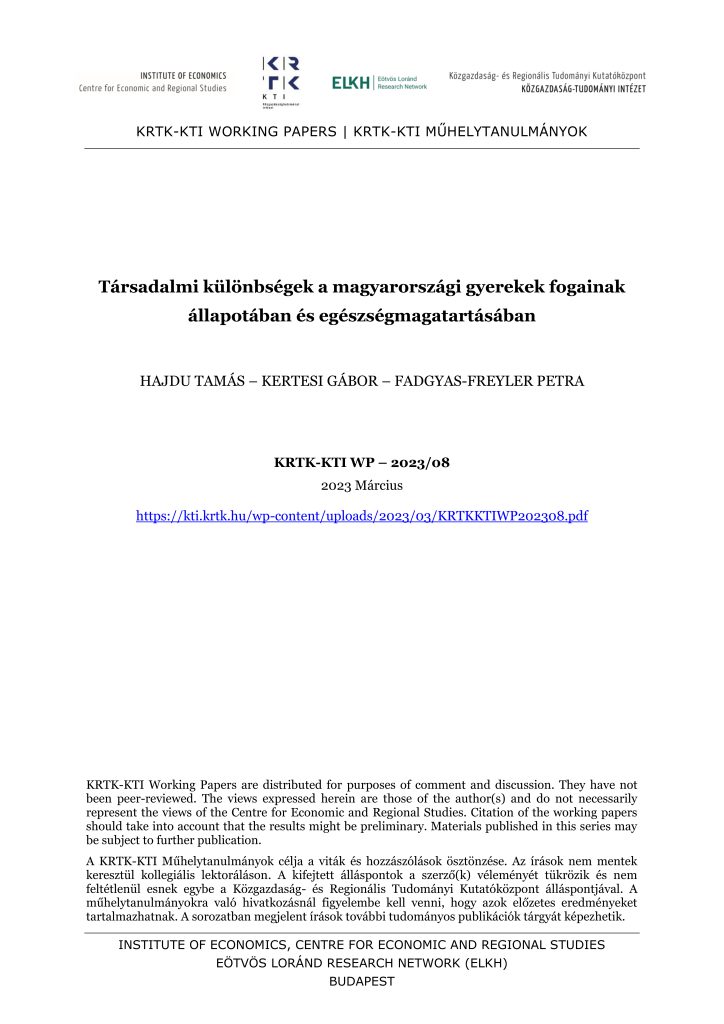
Tanulmányunk a magyarországi kisgyermekek és iskolások fogorvosi látogatásainak, a tejfogak és a maradó fogak állapotának, a fontosabb kezeléseknek, a közfinanszírozott ellátások elérhetőségének és a fogak állapotát befolyásoló egészségmagatartási jellemzőknek a társadalmi egyenlőtlenségeit vizsgál-ja. Ehhez felhasználunk minden olyan elérhető adminisztratív és kérdőíves adatforrást, melyeknek segítségével képet adhatunk a témáról. Rámutatunk arra, hogy már 2-3 éves korban […]
The effect of funding liquidity regulation and ESG promotion on market liquidity
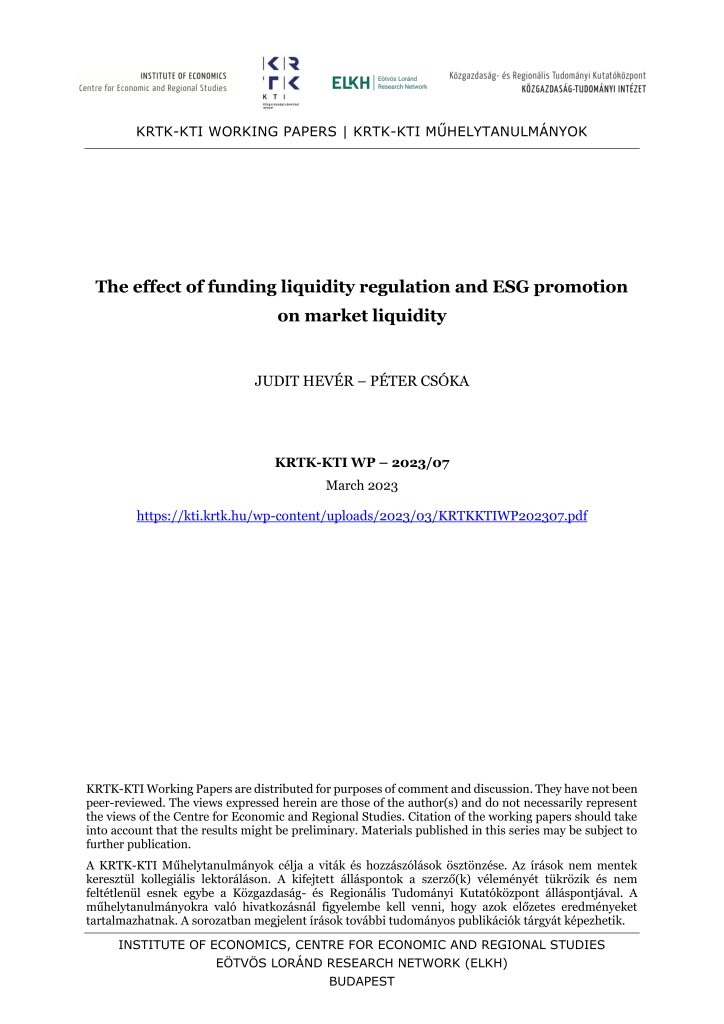
Liquidity is a key consideration in financial markets, especially in times of financial crises. For this reason, regulatory attention to and measures in this field have been on the rise for the past years. Based on practical experience, regulations aiming at ensuring funding liquidity or, in general, reducing certain risky positions have the side effect […]
Unexpected Inflation and Public Pensions: The Case of Hungary
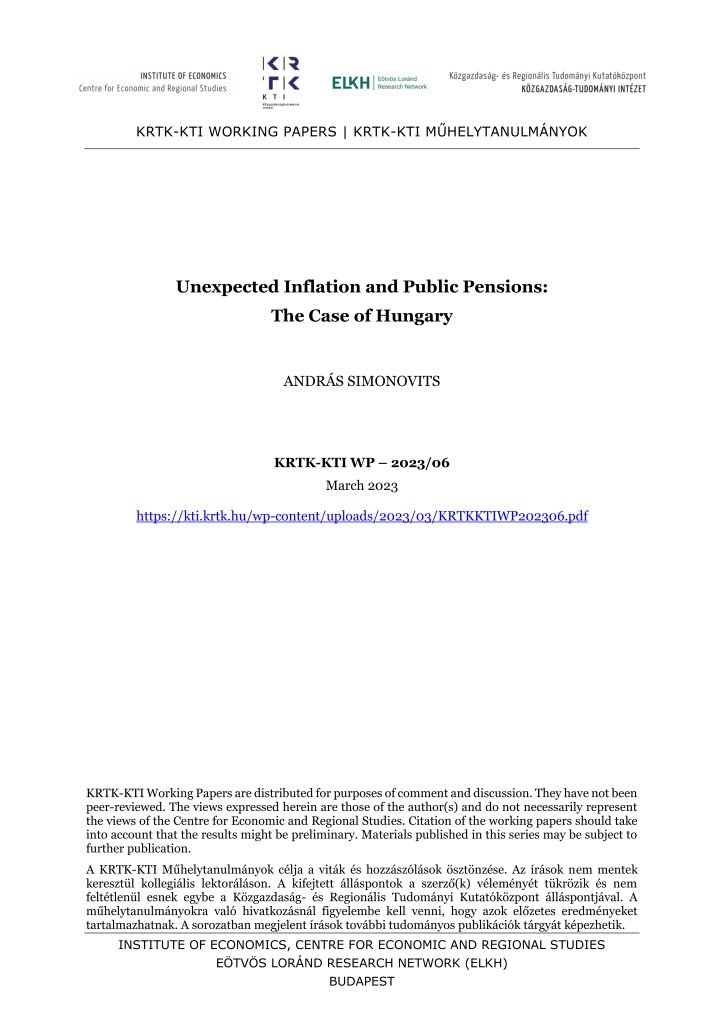
Public pensions are indexed to prices or wages or to their combinations; therefore, the impact of inflation on the real value of benefits can often be neglected, especially under indexation to prices. At high and accelerating/decelerating inflation like currently prevailing in Hungary, however, this is not the case. (i) With fast inflation of basic necessities, […]
Heterogeneous wage structure effects: a partial European East-West comparison

We estimate heterogeneous wage structure effects for country-pairs within the EU by the Causal Forest algorithm, then identify groups of workers with the highest and lowest discrepancies in terms of wage differentials. We find that, in the East-West comparison, age is the most consistently differentiating factor. People over 40 are most adversely treated in the […]
Where is the pain the most acute? The market segments particularly affected by gender wage discrimination in Hungary
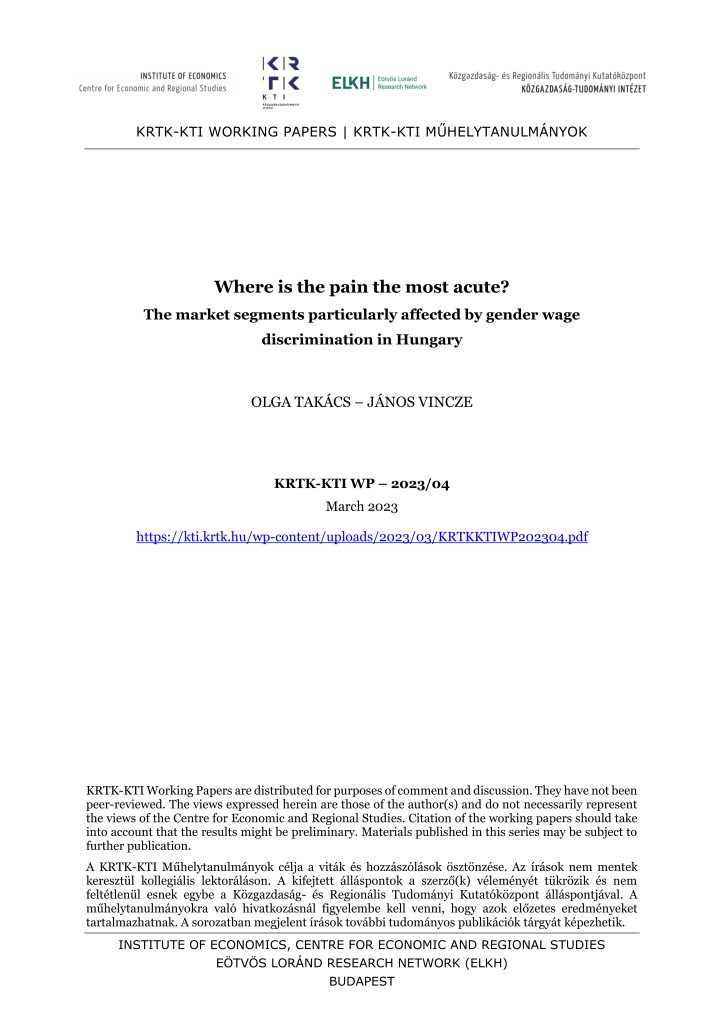
The gender earnings gap can be attributed either to the different distribution of males and females across jobs or to within job biases in favour of men. The latter is frequently called the wage structure effect, and it may be interpreted as wage discrimination against women. In this paper we focus on this second source […]
Social Innovation: Definitions and models reconsidered

Social innovation (SI) has become a widely used buzzword in recent years. It is portrayed as a solution – almost a panacea – to many different types of societal and environmental problems. We can also perceive this development as a strong impetus to clarify its meaning, the actors involved in SI processes, their objectives, activities […]
Innovation Studies, Social Innovation, and Sustainability Transitions Research: From mutual ignorance towards an integrative perspective?

Goal-oriented transformative change processes – that is, system-transforming processes that are guided by the ambition to resolve current or expected future societal challenges of various kinds – can only start once possible goals are considered by key stakeholders and the relevant actors are committed to act. Hence, there is a need for widening the scope […]
The interpenetration of criminal and lawful economic activities

As the world economy operates more and more through computerised transactions, new possibilities for intertwining criminal and lawful economic activities open up, as well as new opportunities for law enforcement agencies to fight crime. Considering the tremendous and potentially devastating damages caused by criminal economic activities, the issue should be high on the agenda of […]
Precautionary Fertility: Conceptions, Births, and Abortions around Employment Shocks

This paper studies the effects of employment shocks on births and induced abortions. We are the first to show that abortions play a role in fertility responses to job displacement. Furthermore, we document precautionary fertility behavior: the anticipatory response of women to expected labor market shocks. Using individual-level administrative data from Hungary, we look at […]
Kontrollhely Magyarországon – egy reprezentatív felmérés eredményei
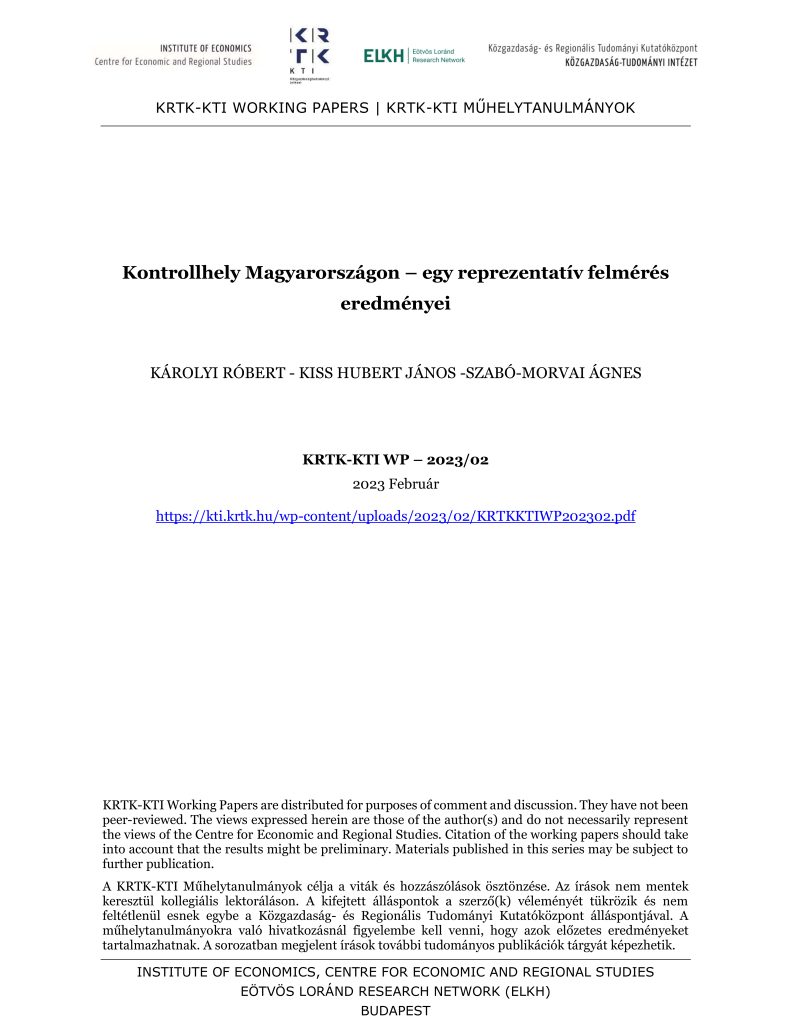
Tanulmányunkban bemutatjuk a kontrollhely fogalmát, ezt a közgazdaságtanban egyre gyakrabban kutatott nem-kognitív képességet. Ezután áttekintjük a kontrollhely közgazdaságtani irodalmát, és bemutatjuk, hogy akik úgy gondolják, maguk irányítják az életüket, sikeresebbek az élet számos területén. Ezt követően egy reprezentatív magyar felmérés adatait vizsgáljuk meg, amelyen többnyire viszontlátjuk a szakirodalom által feltárt összefüggéseket. A kontrollhely a válaszadók […]
Gelei Anna története
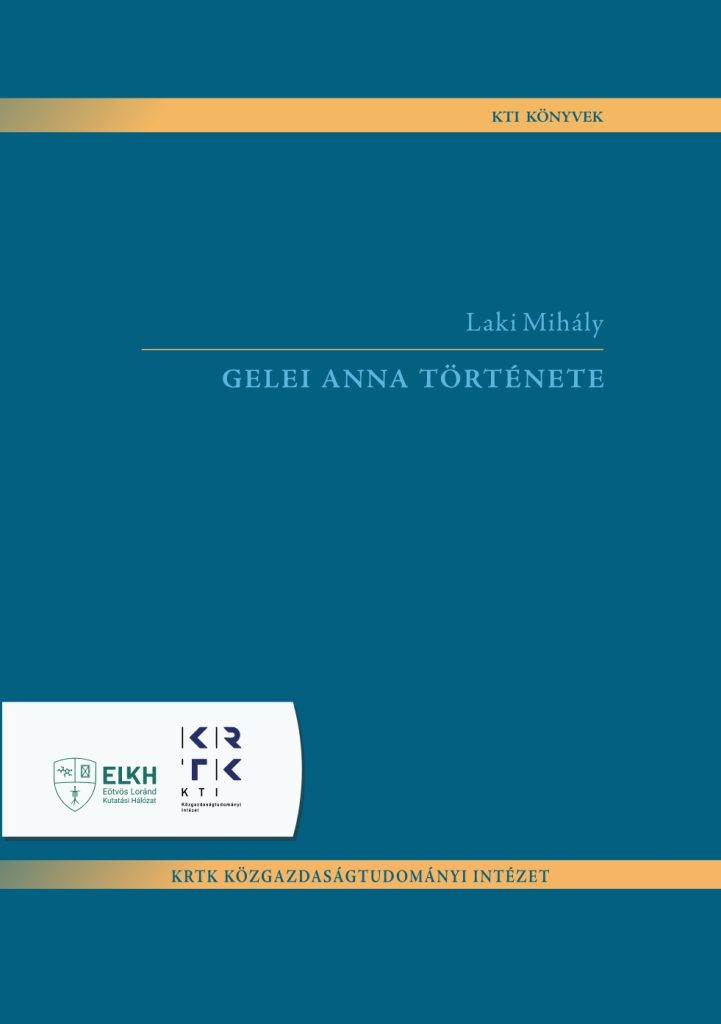
Gelei Anna 1962-1991-ben volt az MTA Közgazdaságtudományi Intézet munkatársa. A vele készült életút interjúból Az érdeklődő (fiatal és öreg) olvasó nemcsak az elődök – egy feltörekvő zsidó polgári család – sorsát, majd 1944–1945-ben szinte teljes kiirtását, de a túlélő kiskamasz Panni és öccse szerencsés túlélése történetét is megismerheti. Már itt megjelennek Panni életvezetési és jellembeli […]
An Axiomatization of the Pairwise Netting Proportional Rule in Financial Networks
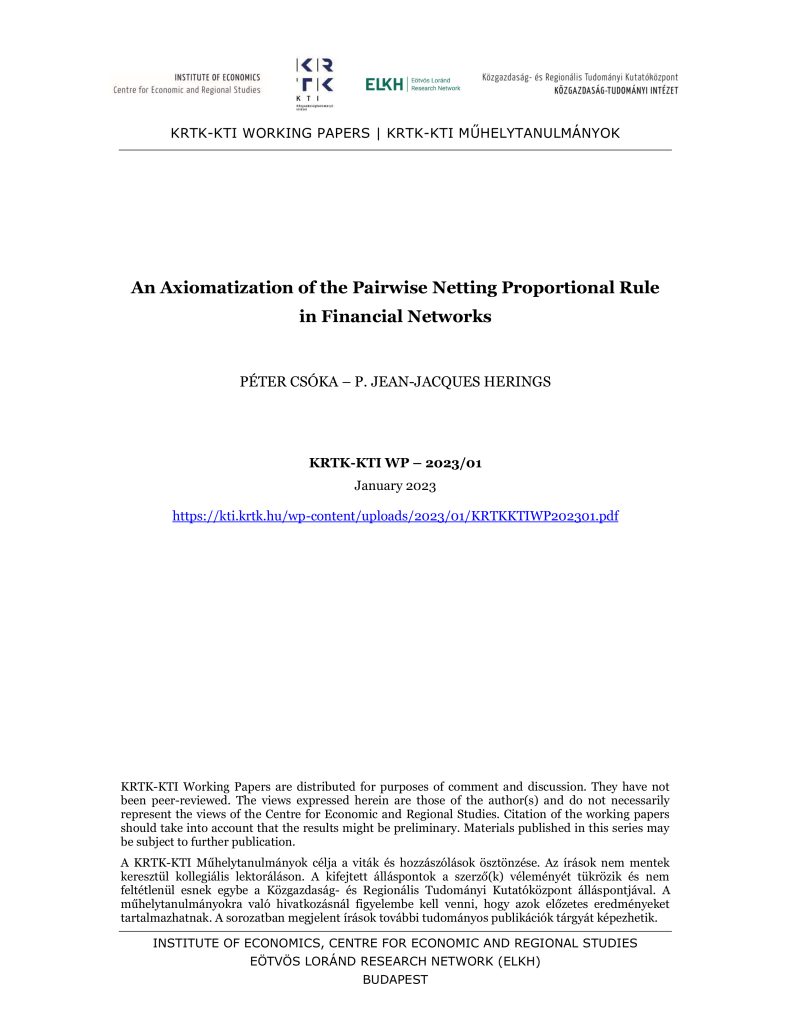
We consider financial networks where agents are linked to each other via mutual liabilities. In case of bankruptcy, there are potentially many bankruptcy rules, ways to distribute the assets of a bankrupt agent over the other agents. One common approach is to first apply pairwise netting of agents that have mutual liabilities and next use […]


